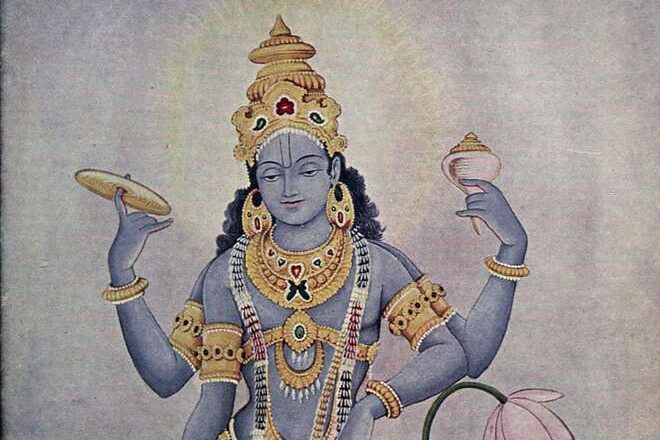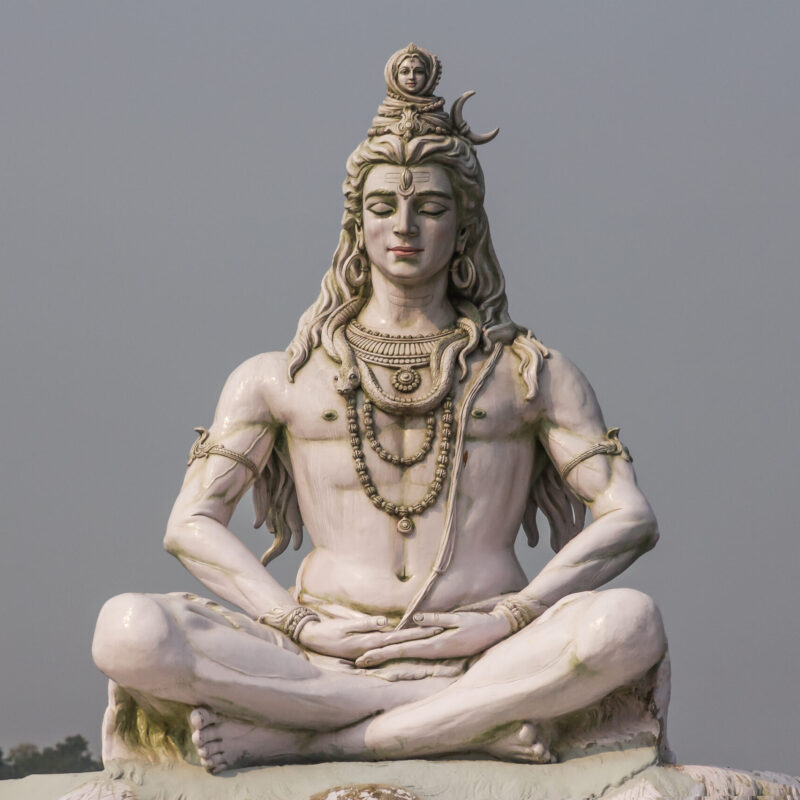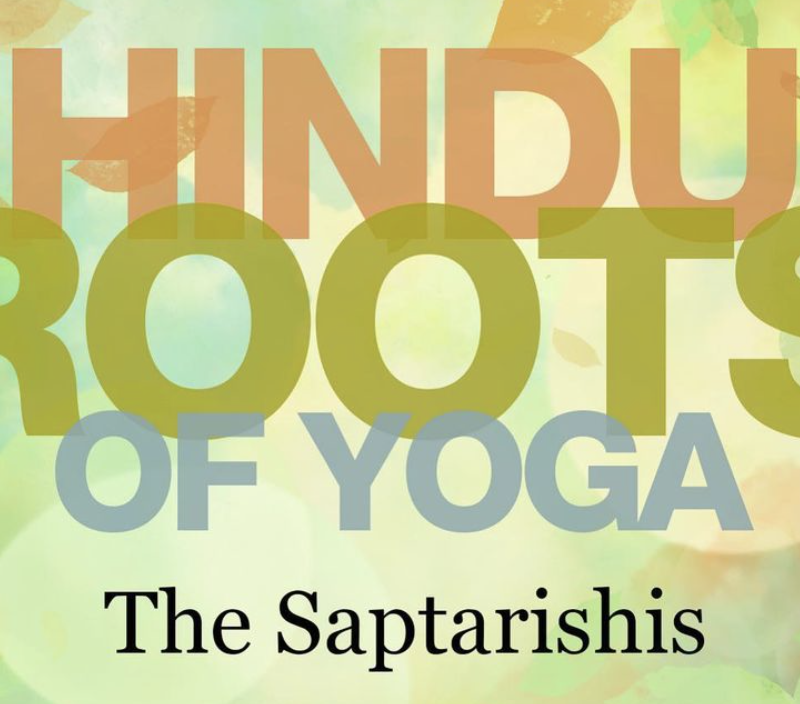
According to yogic philosophy, there is an underlying order to the universe and we all have a part to play in its preservation. Of course, our part in that order and how our actions contribute to maintaining or destabilizing it isn’t always the easiest thing to discern.
Though Hindu texts extol the power of righteousness, depicting numerous stories where a heroic figure restores stability through the strength of love and service, these texts also describe how there are times when things were so unstable that it took more than an ordinary hero to restore balance, it took an avatar.
Literally meaning “descent” in Sanskrit, an avatar is a divine being who descends to the world to fulfill a unique purpose in repairing universal stability. While Hindu writings contain descriptions of many avatars, there are 10 in particular (known as Dashavatara) who are distinctly notable, as they are in connection to Vishnu, the god of preservation who descends when the balance between good and evil is especially askew.
Because continued stability requires all to work together and get along, Vishnu makes a point of incarnating in a variety of forms, emphasizing that the Divine exists in all beings, each of whom have important roles in contributing to a peaceful and prosperous planet. The purpose of an avatar isn’t just to fix our problems for us, it’s also to show us how to respect all aspects of creation, so that we can learn to consistently protect the order ourselves.
Yoga is a process by which practitioners can align themselves with this order, as like Vishnu, yogis emulate many of nature’s forms in their postures, training their minds to appreciate all of life’s manifestations.
Some of these postures are based on Vishnu’s avatars themselves, and by performing them we can understand him, his message, and the ultimate purpose of yoga on a deeper level. So today we’re going to take a little time to learn about four well-known ones.
Matsyasana
Time, according to Hindu texts, isn’t linear, but cyclical in nature, following a process of gradual decline, until what remains is cleared away so things can begin anew once again.
Matysa, the first avatar of Vishnu, is said to have appeared more than once during times of such renewal, but the most famous of these appearances involves a king named Satyavrata, who first encounters the avatar at the bank of a river called Kritamala.
As the story goes, Satyavrata, while bathing in its waters, accidentally scooped a small fish into the palm of his hands. Dropping it back into the river, a little voice suddenly rose from the creature, begging the king for protection from the larger predators that inhabited the Kritamala. Initially shocked by the talking aquatic, Satyavrata quickly became overcome by compassion, and so put the fish in a jug and brought it home to his palace.
The next morning, when he went to see how the fish was doing, he discovered it had grown too large for the jug. Attempting to give it a more comfortable home, he then placed it in a well. Within moments, however, it outgrew its surroundings for a second time, spurring the king to bring it to a lake. Of course, the lake also became too small, so Satyavrata, as a final recourse, took it to the ocean. Once it became clear the ocean too would not be able to accommodate it, the king understood the fish could be none other than Vishnu himself, and requested he please describe the purpose of his appearance.
Pleased by Satyavrata’s sincerity and devotion, the fish revealed to the king that he was indeed an incarnation of Vishnu known as Matsya, and that in a week there would be a universal flood — but not to fear. When the flood occurs, he would provide a great boat, and on this boat he would protect Satyavrata, who should bring on it a collection of Earth’s various herbs, seeds, animals, and prominent sages. Thereby concluding his instructions, Matsya departed, leaving the king to his task of gathering the described people, creatures, and items.
Exactly one week later, as promised, the flood began, filled by a storm of unfathomable measure. Also as promised, Matysa arrived with an awe-inspiring vessel. Attached to an enormous golden horn that came from his head, Vishnu’s fish incarnation guided Satyavrata and company through the duration of the flood, all the while imparting on them spiritual wisdom, the kind needed to create a new world of love, service, and harmony.
Thus based on Vishnu’s fish avatar, Matsyasana is an energetic posture in which one lies down with the legs straight out on the floor or while maintaining a cross-legged position, and reclines into a back-bending arch, lifting the chest until the crown of the head rests on the floor. Opening the heart, this pose facilitates the release of negative feelings, creating a balanced mind.
Kurmasana
The battle between good and evil is explored in a medley of ways throughout Hindu teachings, often taking on universal proportions in the long-standing struggle between the virtuous gods and the power-hungry demons.
Kurma’s appearance took place during a pivotal point in this struggle, when the gods — severely weakened by the curse of a sage — were on the verge of total defeat. Desperate for help, they approached Vishnu who advised them to make a truce with their enemies. If they combined their energies, they could produce a nectar of immortality that could restore the strength of the gods.
Though the demons had the upper hand, the idea of an immortal nectar was too tempting to pass up. They thus agreed to the truce when asked for it, prompting the two sides to immediately go to work.
Told the elixir could be generated out of a divine body of water known as the ocean of milk, the gods and demons, with help from Vishnu himself, carried a golden mountain called Mandara to its waters hoping to use it as a churning rod. After twisting the mountain a few times, however, it began to sink into the ocean, as it needed something on which to pivot. Seeing their frustration, Vishnu gave them his help yet again, assuming the form of an immense tortoise, or kurma. Placing the mountain on his back, the gods and demons were able to resume the churning, eventually succeeding in producing the elixir.
Practiced in stages, kurmasana hence takes its inspiration from Kurma, ending in a position known as supta kurmasana, where a person, while seated, folds the body forward at the waist, placing the head on the floor so the arms can slip under the legs to wrap around the back.
Just as the tortoise incarnation remained calm and undisturbed as he provided pivotal support for the activity that went on above him, kurmasana quiets the nervous system, allowing our inner world to similarly become stable in support of positive actions.
Simhasana
Though avatars are explicitly said to descend for the purpose of bringing balance, inherent in this purpose is the goal of looking after those on the path of spirituality, particularly those advanced in their devotion to Vishnu.
As such, the manifestation of Narasimha is specifically meant to emphasize Vishnu’s protective nature, highlighted in a popular Hindu story about an incredibly powerful demon named Hiranyakashipu and his son Prahlad.
Having terrorized and conquered the entire universe, Hiranyakashipu believed himself to be all-powerful, and expected everyone to worship him as if he were God. When he thus discovered his five-year-old son was a great devotee of Vishnu, openly glorifying the god of preservation, he became enraged, and decided to have the boy killed.
Recognizing Prahlad’s immense devotion, Vishnu saved the boy multiple times, eventually appearing in a glorious yet terribly fierce form that was part-lion and part-man. Filled with a protective rage, he then tore Hiranyakashipu apart, ending his life for daring to harm the saintly Prahlad.
Fueled by the Narsimha incarnation, Simhasana has two variations, the first in which one, while seated, stretches the arms, presses the palms against the knees, opens the jaws wide, sticks the tongue out towards the chin, and gazes at the midpoint of the eyebrows. The second is similar to the first, except the body is lengthened forward, resting on one’s palms which are now planted firmly on the ground. Focused on a strong and deliberate exhalation through the mouth, both positions guide the release of built-up anger and resentment in a cathartically positive way.
Supta Trivikramasana
Because the gods are famous as beings of virtue, those who oppose them are regularly depicted as hostile and obstructive to the tenets of spirituality that hold the world together. Yet, not all who have fought the gods fit into such depictions, and King Bali is a shining example of one of them.
While a dynamic leader of the demons who took over the whole universe, Bali was also the grandson of Prahlad. Hence following in his grandfather’s footsteps, he exhibited extraordinary qualities of selflessness and justice, acting fairly to all who approached him.
Vishnu, who was asked by the gods for help in restoring the balance of power between them and the demons, was aware of Bali’s righteous disposition. Therefore, rather than simply fight the king, he instead decided to take the opportunity to test his devotional sincerity.
One day when Bali was performing a yajna (a form of Hindu worship), a small, young, and cheerful boy known as Vamana approached the king and asked if he would give him as much land as he could cover over three paces. Though his guru, Sage Shukracharya, told him the boy was actually Vishnu in disguise and advised against granting the request, Bali, who could not forgo his charitable tendencies, ignored the warning.
Of course, as soon as Bali granted Vamana’s wish, the boy, who was indeed Vishnu, displayed his miraculous potency and assumed a gigantic form, amassing the whole Earth — including Bali’s kingdom — with just a single step of his foot. Then, taking his second step, he covered all of the heavens, just as easy as he had covered the Earth. Having thereby reached the edge of the universe, it was at this point he turned to the king, wondering where he could place his last step. With no land left to give, Bali, exuding humility, unhesitatingly bowed, as he happily asked Vamana to place the remaining step on his head.
Supta Trivikramasana, meaning “reclining three-step posture,” is accordingly named after Vamana, the incarnation of Vishnu who reestablished universal balance with three steps. Beginning on the back, the pose has the yogi lift one leg until the foot can be grasped by the hands alongside the head, directing one into a reclining split position. Stretching the hamstring and opening the hips, this posture activates an energy that is passionate, yet grounded by a feeling of security and safety, offering a sense of power that can be conducted by a still and tranquil mind.
If you enjoyed this piece, then you may also be interested in reading “The Hindu roots of yoga: Shiva“












































